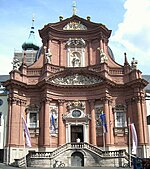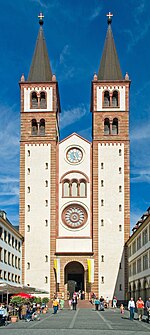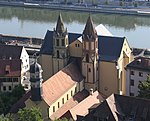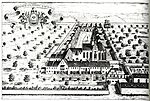Marienkapelle, Würzburg
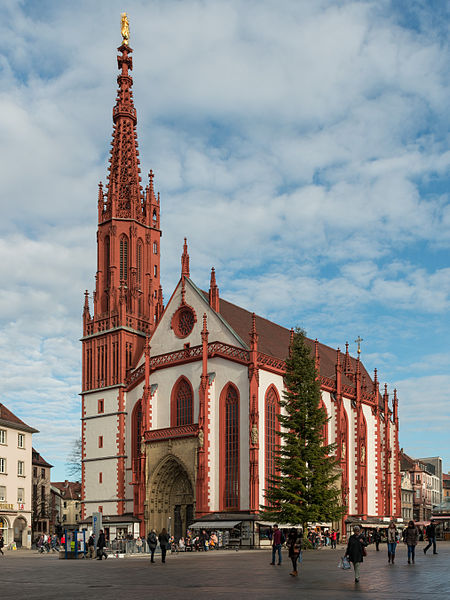
The Marienkapelle is a Roman Catholic church located at the Unterer Markt (market square) of the town of Würzburg, Bavaria. It was built in the Gothic style in the 14th century. Despite its large size, it is a chapel by status, as it does not have a parish. Today it is administered by the united parishes of the Würzburg Cathedral and the Kollegiatstift Neumünster. The chapel was heavily damaged by the Bombing of Würzburg in World War II and its interior was destroyed by flames. It was rebuilt in the 1950s and re-consecrated in 1962. Its two best known works of art, the sculptures of Adam and Eve by Tilman Riemenschneider, are today located in the Mainfränkisches Museum and have been replaced in-situ by copies. The chapel is also the place of burial of noted Baroque architect Balthasar Neumann.
Excerpt from the Wikipedia article Marienkapelle, Würzburg (License: CC BY-SA 3.0, Authors, Images).Marienkapelle, Würzburg
Unterer Markt, Würzburg Würzburg Altstadt
Geographical coordinates (GPS) Address Website Nearby Places Show on map
Geographical coordinates (GPS)
| Latitude | Longitude |
|---|---|
| N 49.794722222222 ° | E 9.9294444444444 ° |
Address
schreiers fish & more
Unterer Markt 13
97070 Würzburg, Würzburg Altstadt
Bavaria, Germany
Open on Google Maps


